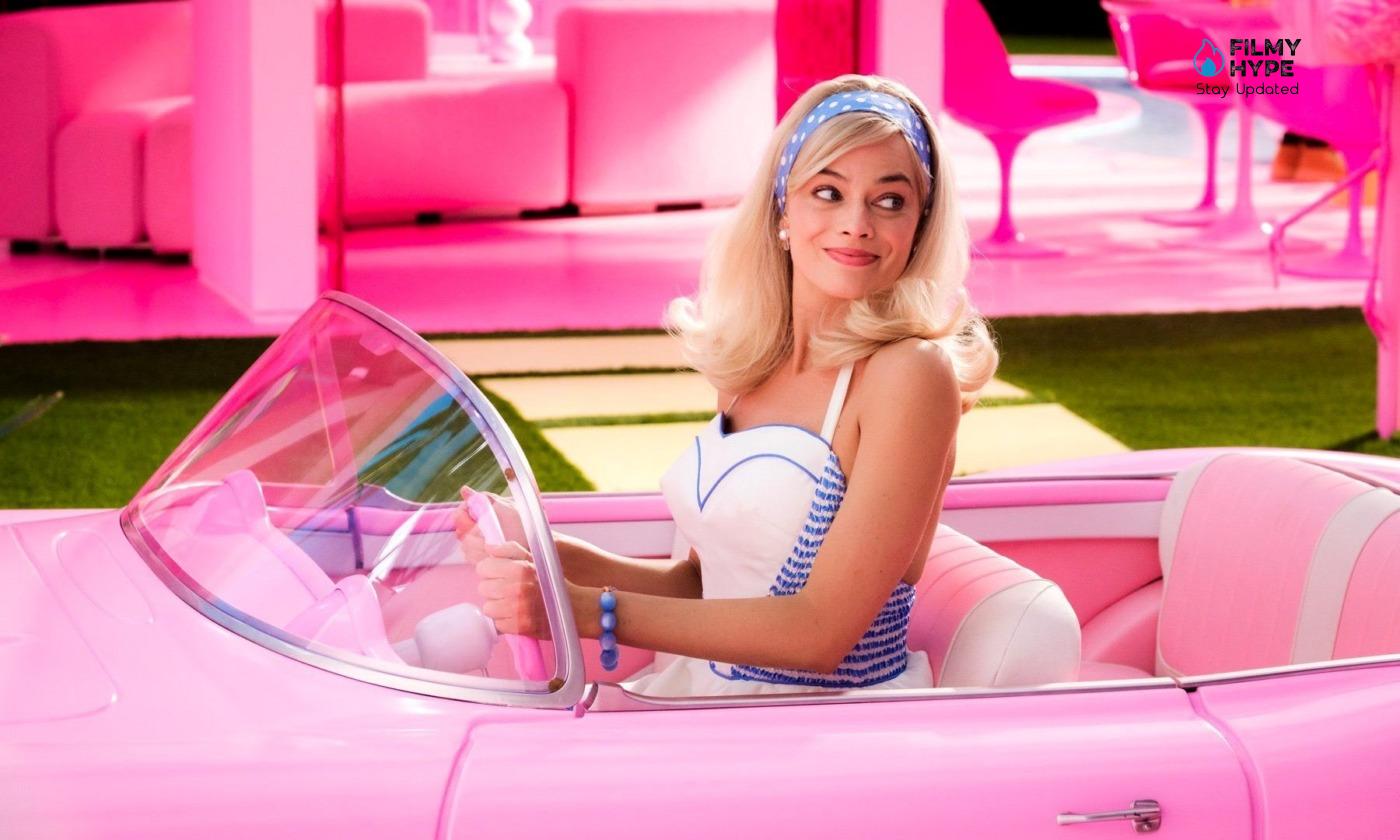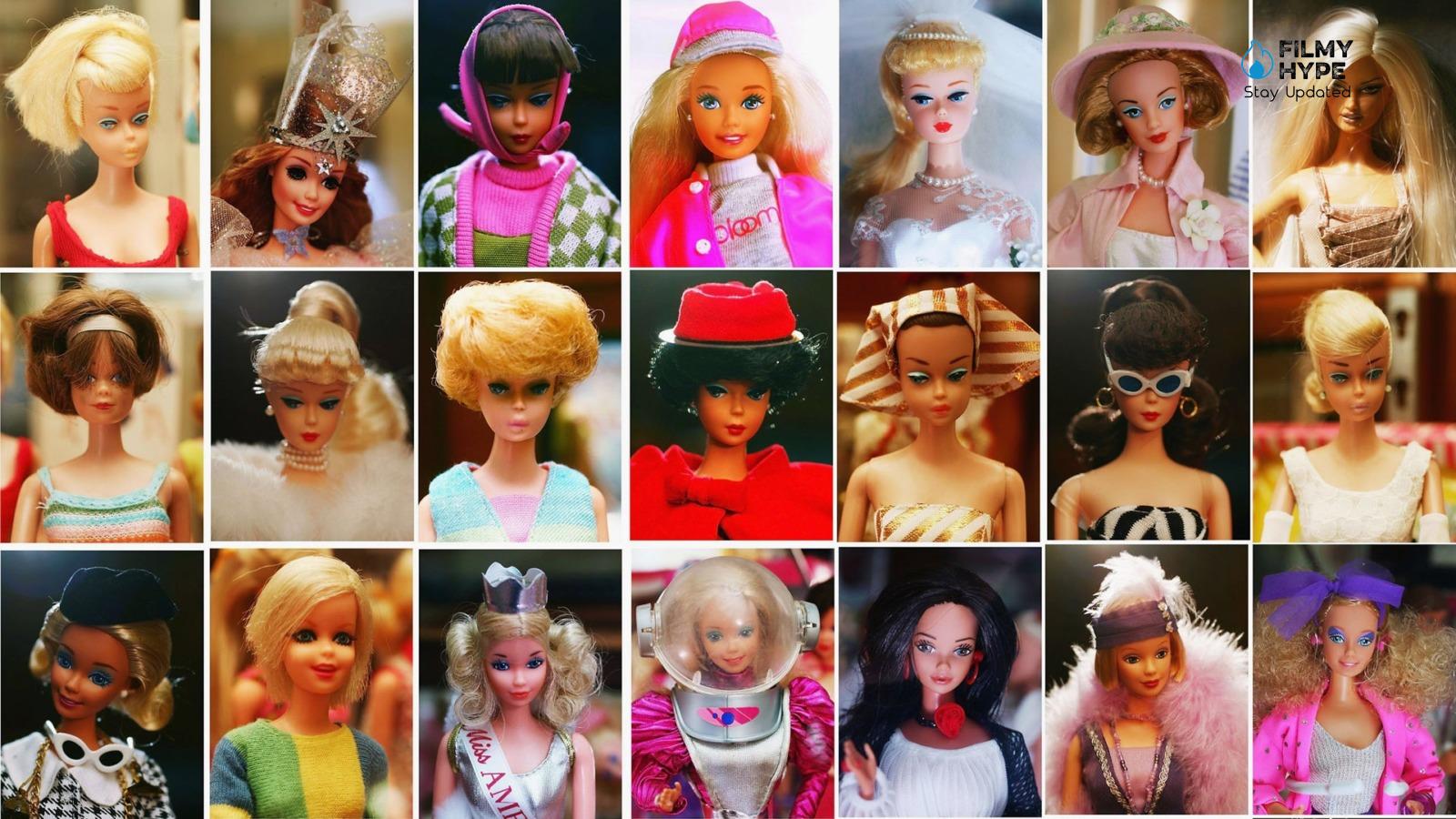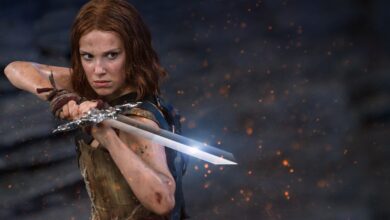Barbie Origin: The Strange Origins of Barbie and Here Why Barbie Is a Revolutionary Character?
Barbie is one of the most loved character with a Shiny smile, enviable beauty, and an example for girls all over the world. Today she has the sunny and reassuring face of the splendid Margot Robbie, but sixty years ago she had the appearance of a busty woman of easy virtue. Alluring, provocative, uninhibited. Well, yes. The success of Barbie, the most famous and controversial doll in the world, hides a story full of strange crossroads of fate. A story that bothers American society, stereotypes, post-war Germany, and a former rocket engineer lent to toys. How did we go from an object of desire in the hands of Teutonic males to a cult phenomenon? We’ll tell you right away.

The Strange Origin of Barbie: The Blond Gamble
Little Ken could imagine he was anything. A cowboy, a policeman, a soldier, an astronaut. Instead, his sister, no. Little Barbara could only play at being a mother. Only dolls to look after. End of female imagination. Then, one day, their mom notices something. Note that little Barbara often played by cutting out silhouettes of famous actresses from some magazines. They are photos of real women with whom you can imagine yourself growing up. That mother was called Ruth Handler, wife and collaborator of a gentleman called Eliott, one of the founders of Mattel, a company specializing in accessories for dollhouses.
Ruth had an epiphany that day: why not invent a doll that represents a modern and adult woman with which every girl can identify? Maybe a career woman, no longer relegated to the home. A revolutionary idea that broke the mold. A risky idea which, however, did not yet have a shape. The spark comes in 1959 when Ruth is in Switzerland. It is there that she is enraptured by a doll displayed in the window.
Her name is Lilli and she embodies a decidedly sensual and disruptive femininity. A lot of make-up, shapes on display, and winking expressions. This is because Lady is a doll for adults, inspired by the character of the same name from a comic strip published in the German tabloid Bild. Purpose of the femme fatale? To cheer the average German male, afflicted by the post-war period, with her beauty and availability. Just think, the provocative figure was not sold to girls, but given to men at bachelor parties or given to women as a subliminal message. Lilli’s winking gaze seduces Ruth, who buys three models and takes them to America. Here, on the border between plagiarism and reinterpretation, Barbie finally finds a daring friend to inspire.
Like You Were a Doll?
The incredible genesis of Barbie does not pass only through this alienating bond with a “sex doll” (as it was defined in Germany). No, because the designer Jack Ryan, an eccentric character with a past as a missile engineer in the American war industry, takes care of giving life to the character. This time, however, the mission is different: to find the perfect design for the doll inspired by Lady. Ryan decides to work on the details, but the basis remains hers: an adult, beautiful, blonde woman with a narrow waist and evident shapes.
There are two brilliant ideas. The first: is to give the doll a more refined and graceful touch, transforming sensuality into the classroom with carefully studied expressions and hand positions. Second: create a real mannequin on which every little girl can always experiment with different clothes. In terms of strategy, we’re on the side of razor blades: I force you to buy the fundamental base (the razor-doll) to then push the customer to buy the accessories to further enhance the first purchase (each dress, therefore, counts as a razor blade). For this, you need a doll with a very long neck so that her face can stand out even more layers of dress.

After having filed off some defects that Ruth didn’t like (such as the nipples on her breasts), finally, Barbie (named in honor of her daughter) is ready to be launched on the market with its first version: a black and white bikini and makeup inspired by Erwin’s Blumenfeld, seen on the cover of Vogue dated January 1, 1950. The presentation took place in 1959, on the occasion of the prestigious New York toy fair. Too bad that launch is a colossal flop. Being an event full of men, Barbie is not understood and in the first months after the launch even the mothers are perplexed: why give my daughter such an uninhibited woman? Let’s keep her playing with the dolls. To make her truly accepted by the general public, a strategy daughter of patriarchy is adopted: to put a Barbie bride on the market and transform the doll into the model of the perfect wife. An ingenious tactic that works great.
From that moment the Barbie phenomenon exploded all over the world, ready to change fashion after fashion, era after era, sensibility after sensibility. A simple doll thus becomes a projection, the embodiment of the wishes of millions of little girls who can imagine themselves as women through her. There will be controversy, of course. From accusations of materialism to the epic failure of the scale bet on the 50 kilos placed in a package. Also passing from the fear that Barbie has fueled the stereotype of the unintelligent superficial blonde woman. Mattel will adjust the shot by embracing the female revolution through inclusion and choice in step with the times. And if we are here today waiting for the Barbie movie without knowing what to expect in the theater, it is also thanks to a chameleon doll, capable of changing and escaping her stereotype.
Because Barbie Is A Revolutionary Character?
Thence the beginning of time, ever since the first maiden existed, there have been dolls”; this is the sentence that opens the opening monologue of Barbie, the highly anticipated feature film by Greta Gerwig – and of which you can find our review here. Against the backdrop of an ocher sky and land that recalls the iconic prologue of 2001: A Space Odyssey, little girls play with their dolls, which also look like little girls, in a vicious circle that seems to suggest a fate already decided for the little girls. Then, in place of the phallic-shaped monolith on which Kubrick later built his masterpiece, the figure of Barbie played by Margot Robbie emerges.
Not even five minutes have passed on the screen, and in a handful of frames, the director has already dictated not so much the pace of the film as the intention of inserting a woman into a world made up of men. Barbie takes the place of any male symbology and becomes its owner. This is the starting point of a film we don’t want to give any spoilers about, but it is above all a starting point for understanding how much the post-modern Barbie brought to the screen by Greta Gerwig is the narrative revolution we’ve been waiting for.
From Damsel in Distress to Strong Women!
Once upon a time, there was a princess who waited for true love’s kiss to be rescued from the dragon/returned to human/resurrected after a spell. Choose the formula you prefer, but the basic concept is the same. There is a woman who stands still, almost motionless, waiting for a man to come and save her and give meaning to her existence. The fairy tale tradition that has reached the general public thanks to Disney feature films has often been based precisely on the concept of a damsel in distress. A concept which then, in literature, was joined by that of Mary Sue: innocent and perfect protagonists who find meaning in their existence only when they are completed by a man. It is a type of story that does not concern medieval stories or stories from past centuries: just look at the recent history of cinema to find them.
One of the first examples that may come to mind is Jerry Maguire, in which the character played by Renée Zellweger not only abandons his job to follow the ideas of his love interest, but receives a “blessing” when the protagonist declares his love for her not listing her characteristics that led him to fall in love, but focusing on the function she can have for his ego, with that ” you complete me ” that has become iconic. It doesn’t mean that these kinds of stories are wrong: they were stories of their times, responding to the culture of those times. At a certain point, however, the so-called distressed damsel began to tire the public, who felt the need for something different. The damsel in distress had perhaps run out of steam: the public wanted what later became the strong female character.
The Evolution of the Strong Female Character: From Buffy Onwards
The manifesto of this change can be represented by Buffy Summers, the iconic character brought to the small screen by Sarah Michelle Geller. On paper, Buffy was the prototypical “America’s sweetheart.” She has fashionable clothes, blond hair, a “Californian” beauty, and all the credentials to be yet another prototype of the princess to save. And this is where the first revolution takes place: Buffy continues to be a superficial cheerleader, with trendy boots and a vanity that doesn’t want to be eradicated. But, at the same time, she is the hero who fights monsters and saves her schoolmates.
Buffy is perhaps the first mainstream example of a true strong woman. A woman who is no longer just black or white, perfect or sinful, tempting angel or devil. Buffy represents the disruption of the status quo. The female character is now everything: cheerleader and “loser”, prom lover and vampire hunter, world savior, and a cosmetics expert. Buffy was a character who embraced femininity and made it universal and not just a mere tool of gender. She was a protagonist who freed herself from the weight of an old “angel woman” legacy and became a “real person”. Buffy – The Vampire Slayer is a series that has become iconic also for this revolution.
The following year, Mulan arrives at the cinema, a feature film from Disney that once again overturns this axiom. Unlike Buffy, who is a strong woman dressed in vanity always associated with the female world, Mulan is a girl who renounces her feminine appearance, hides all the signs and characteristics of her gender, and throws herself into a world of men. Her femininity is forced, almost sinful, something to be kept away from her prying eyes. Yet it is she who “saves China”, she is the heroine who defeats the Huns. And, far more important, it is she who is given credit for the great deed. She’s not a pawn in a team, she’s not a girl joined by a great man. Mulan is a woman who is given credit for her work.
The Failure of the Idea!
In a context like the one we have just described, there is no longer any place for the “princess” commonly understood. Think, for example, of Shrek. Fiona is not a traditional princess, and her narrative path is aimed at unhinging all the fairy-tale clichés associated with female figures. From this point of view, precisely because of its ability to deconstruct decades of storytelling, Shrek represented a further turning point. But if we pay more attention to the character of Fiona, it is emblematic that the protagonist still needs the male gaze and her “permission” to understand herself and learn to accept herself. Already from this feature film, which dates to 2001, it can be glimpsed how the construction of the strong female character showed cracks right from the start which then led the figure to be in turn a cliché, failing to inherit those characteristics of which Buffy had laid the groundwork.
Strong women were no longer “real” women, but very often they were characters created mechanically and artificially, who used a certain toughness to represent a strength they didn’t have. The most recent case is that of the character Hayley Atwell plays in Mission: Impossible – Dead Reckoning – Part One. At first glance the character of Grace has immeasurable potential: she is intelligent, good at her job, selfish, and always ready to answer, to keep up with the male protagonist. But throughout the film, this construction remains firm “on paper”. Grace becomes just a girl with a good sense of humor who wants to appear cool, but she needs to be saved – even from herself – every time she makes a decision or takes action.
Also, when trying to bring the “strong woman” to the screen, the focus is on just that: she has to be strong. Captain Marvel is cool. Galadriel is a leader. Helena, from the last chapter of Indiana Jones, knows how to resist chases and challenge the villain. But that’s all. If the male protagonist can be strong, masculine, fragile, ironic, and full of flaws, strong women cannot be anything else: a cliché of a strength that is very often simple stubbornness written in a non-excellent way.
The Arrival of Barbie and Her Revolution?
Then, of course, came Barbie. The protagonist of Greta Gerwig’s film is the one who inherits what Buffy had begun to build in the late nineties. Not because she – or not only – because she is that classic character who “saves himself”, but because, as the opening sentence of the film also states, she can be anything she wants. Barbie is a revolutionary character not for the statuesque beauty of Margot Robbie, not for her ability to accept challenges: she is a revolutionary character because she has a dark side of her, her network of scars and wounds, the doubts that they buzz in the head. Barbie is a strong female character not because she is a strong woman who knows what she has to do, but because she is a woman who is forced to be strong even though it’s falling apart.
It is in the freedom that this character of being imperfect has that Greta Gerwig’s revolution lurks. We don’t want to give you any spoilers – Barbie is truly a film that must be experienced firsthand – but you need to understand this. Beneath Margot Robbie’s flawless make-up and screen-filling beauty lies a dark but deeply real world. Between her shocking pink tones and her pastel shades, Barbie hides her sense of inadequacy, her fears, her fear of wanting something different. Greta Gerwig paints with her writing a female character dealing with depression, with the feeling that she can’t be enough. “I’m not good at anything,” she says at one point, giving voice to that impostor syndrome of which women are victims in higher percentages than men because they have always been used to having to prove something.
That’s why Barbie is the woman character we needed: because it’s not always strong and it doesn’t always want to be. And paradoxically, her strength emerges more when she announces her fragility when despite her appearance she feels like an ordinary woman. A woman like many. She’s not extraordinary. Not unique. Not strong enough to leave its mark on history. A woman, full stop. She that sometimes she can save herself and sometimes she needs her friends. A woman who can wear high heels as well as Birkenstocks. That she may be a plastic doll, but she can also be a creature of heart, blood, and weaknesses. A woman who is many things together: things that she chooses and that are not imposed on her. And those that, on the contrary, are determined by culture and the status quo are the same ones that she refuses, to which she turns her back, to pursue herself.






